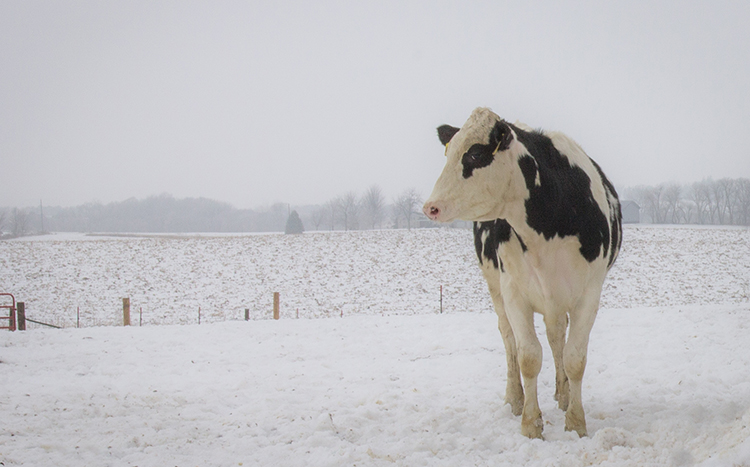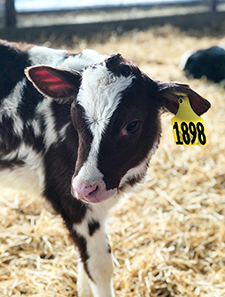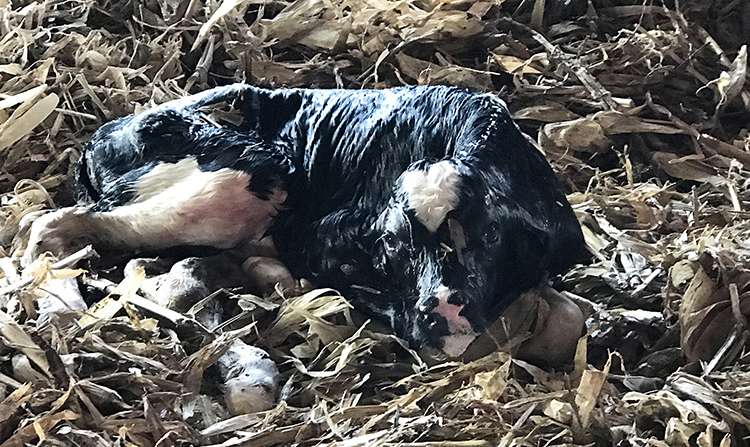
Okay, here’s a cliché topic for you — let’s talk weather. Usually a small-talk initiator, weather is top-of-mind for many throughout the country right now, and it has been the conversation core as of late.
In the world of farming, weather isn’t just a line you drop getting to the main talk; it’s what farmers really want to dive into. Because my goodness, weather does make all the difference. No matter your occupation, weather can affect your mood and daily routine in the best and worst ways. For farmers, those effects are amplified tenfold.
It was 10°F today, and let me tell you — it was an absolute dream compared to the last few weeks! I chose to live in Iowa for a long list of reasons, and I actually don’t mind the colder temperatures Iowa winters bring; but once we start dropping below zero, the eye rolls toward Mother Nature increase. The weather forecast is even more important to me during my first winter back to full-time dairy farming. We’ve experienced a few weeks now of 30 below zero for wind chills, accompanied by plenty of issues that call for extra action and precautions on the farm.

This is our first winter farming at the location where I live. In the past, our farming operation consisted of the home farm where my parents live and then a mile down the road where my brother lives. A new location means learning about the state of existing equipment — and we’ve learned there will be several replacements and improvements made once we get through this winter.
As many farmers can probably relate, I’ve been spending my mornings hauling 5-gallon pails of hot water and a sprayer to thaw drinkers. The process of thawing our drinkers involves hammering off any layers of ice that formed overnight, scooping out slush and ice (pro tip: metal kitty litter scoops work wonders for this task), filling the drinker with pails of hot water, and trickling hot water on the valves and water lines to promote thawing. We’ve also added loose insulation around our water valves to slow the freezing process. We’re definitely looking forward to spring when we will replace our problem drinkers with better heated and insulated options.
One other area of our day-to-day that’s been affected the most is caring for young calves. Cows and older livestock handle cold temperatures impressively — as long as they have a well-ventilated shelter, plenty of water and feed, and are kept dry, they can withstand extreme weather without much concern. However, right when calves are born, they are at severe risk of freezing due to their wet coats, blood flow, body temperature, and slowed heartbeats.

The other morning, we had three calves born by 5 a.m. on a negative 30-degree-day — not the ideal time to welcome a new baby. The minute these calves hit the ground, they were immediately moved to our heated parlor area or our heated milk room in the calf building. It takes only minutes for a calf to freeze, so checking the calving pen more often is crucial in preventing calf deaths. Our heated areas become chaotic quickly during cold weather, as we house new or sick calves in warmer conditions until they can handle being moved to their usual straw-bedded pens.
Artic temperatures mean feed rations need adjusting, machinery needs extra time to warm up, frozen manure becomes difficult to clean up, washing the parlor becomes limited with freezing doors, pens need extra bedding, and much more. These are just a few things we dairy farmers face in the midst of cold spells.
As I mentioned earlier, the weather is far more than a small-talk topic for farmers. The weather impacts everything we do, and our farm’s needs change with the seasons. Whether it’s extreme heat in the summer, extended rainy periods in the spring, or plummeting temperatures in the winter, weather dictates every animal’s needs and a farmer’s daily routine.

The author dairy farms with her parents and brother near Hawkeye, Iowa. The family milks approximately 300 head of grade Holstein cows at Windsor Valley Dairy LLC — split half and half between a double-eight parallel milking parlor and two robotic milking units. In the spring of 2020, Molly decided to take a leap and fully embrace her love for the industry by returning full time to her family’s dairy.







